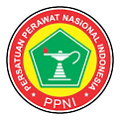Exploration of Contextual Factors Affecting the Effectiveness of E-Kescatin Application Utilization: A Qualitative Study in Pringsewu Regency
DOI:
https://doi.org/10.26630/jk.v16i2.5108Keywords:
Health innovation, Public health, Reproductive healthAbstract
The E-Kescatin application was developed as an innovation in premarital health services to support stunting prevention efforts through a digital approach. However, the effectiveness of utilization of this application still shows variations between regions and is not optimal at the implementation level. This study aims to explore the contextual factors that influence the effectiveness of the E-Kescatin application utilization in Pringsewu District, Lampung Province. The research used a qualitative approach with an exploratory study design. Informants were selected purposively, consisting of midwives, brides-to-be, Health Office officers, and MCH program managers. Data collection was conducted through in-depth interviews and focus group discussions. Data analysis was done thematically with an interpretative approach. The results identified five main themes that influence the effectiveness of app utilization, namely: (1) accessibility of technology and digital infrastructure; (2) digital competence of health workers; (3) perceived benefits from the user side; (4) policy and regulatory support at the local level; and (5) cross-sector integration in the implementation of premarital services. It is concluded that the effectiveness of E-Kescatin application utilization is influenced by contextual factors that include technical, social, and institutional aspects. Therefore, improving the success of application implementation requires a collaborative and adaptive approach to local conditions. The findings of this study provide a significant contribution to strengthening digital transformation policies in the field of reproductive health.
References
Aisyah, D. N., Setiawan, A. H., Mayadewi, C. A., Lokopessy, A. F., Kozlakidis, Z., & Manikam, L. (2025). Understanding health information systems utilization across public health centers in Indonesia: Cross-sectional study. JMIR Medical Informatics, 13, e68613. https://doi.org/10.2196/68613
Andayani, D., Handayani, T., & Lestari, N. (2024). Preconception health counseling and its effect on maternal preparedness: A quasi-experimental study in Yogyakarta. Indonesian Journal of Reproductive Health, 15(2), 88–96.
Ayuanda, R., Pratiwi, D., & Nurhidayah, S. (2024). The impact of premarital education on reproductive health readiness among prospective brides in Central Java, Indonesia. Journal of Midwifery and Public Health, 12(1), 45–54.
Bimanur. (2024). Building a connected Indonesia through digital infrastructure and connectivity. Center of Governance & Digitalization.
Birt, L., Scott, S., Cavers, D., Campbell, C., & Walter, F. (2016). Member checking: A tool to enhance trustworthiness or merely a nod to validation? Qualitative Health Research, 26(13), 1802–1811. https://doi.org/10.1177/1049732316654870
Braun, V., & Clarke, V. (2022). Thematic analysis: A practical guide. London: SAGE Publications. https://doi.org/10.53841/bpsqmip.2022.1.33.46
Carter, N., Bryant‐Lukosius, D., DiCenso, A., Blythe, J., & Neville, A. J. (2014). The use of triangulation in qualitative research. Oncology Nursing Forum, 41(5), 545–547. https://doi.org/10.1188/14.ONF.545-547
Davis, F. D. (1989). Perceived usefulness, perceived ease of use, and user acceptance of information technology. MIS Quarterly, 13(3), 319–340. https://doi.org/10.2307/249008
Etikan, I. (2016). Comparison of convenience sampling and purposive sampling. American Journal of Theoretical and Applied Statistics, 5(1), 1–4. https://doi.org/10.11648/j.ajtas.20160501.11
Fuad, A., Tiara, A., Kusumasari, R. A., Rimawati, & Murhandarwati, E. E. H. (2023). Introducing a regulatory sandbox into the Indonesian health system using e-Malaria as a use case: Participatory action study. Journal of Medical Internet Research, 25, e47706. https://doi.org/10.2196/47706
German, C. J., Kengia, J. T., & Mwanyika, H. (2024). Building a digital supportive supervision system for improving health service delivery in low- and middle-income countries through the collaborative requirements development methodology (CRDM): Experience from Tanzania. Gates Open Research, 8, 74. https://doi.org/10.12688/gatesopenres.15870.1
Global Nutrition Report. (2023). Country nutrition profiles: Indonesia. Development Initiatives. https://globalnutritionreport.org/resources/nutrition-profiles/asia/south-eastern-asia/indonesia/
Global youth perspectives on digital health promotion: A scoping review. (2023). BMC Digital Health, 1, Article 25. https://doi.org/10.1186/s44247-023-00025-0
Grieve, N., Braaten, K., MacPherson, M., Liu, S., & Jung, M. E. (2025). Involving end users in the development and usability testing of a smartphone app designed for individuals with prediabetes: Mixed-methods focus group study. JMIR Formative Research, 9, e59386. https://doi.org/10.2196/59386
Godsey J. A., Houghton D. M., Hayes T. (2020). Registered nurse perceptions of factors contributing to the inconsistent brand image of the nursing profession. Nursing Outlook, 68(6), 808–821. https://doi.org/10.1016/j.outlook.2020.06.005
Haryanti, P., et al. (2023). Application of the health belief model in improving healthy behaviors among pregnant women: A literature review. International Journal of Health Sciences, 11(4), 123–135. https://doi.org/10.59585/ijhs326
Hennink, M., Kaiser, B. N., & Marconi, V. C. (2021). Code saturation versus meaning saturation: How many interviews are enough? Field Methods, 29(1), 97–114. https://doi.org/10.1177/1525822X17706185
Hossain, M. K., Sutanto, J., Handayani, P. W., & Haryanto, A. A. (2025). An exploratory study of electronic medical record implementation and recordkeeping culture: The case of hospitals in Indonesia. BMC Health Services Research, 25, 249. https://doi.org/10.1186/s12913-025-12399-0
Human Resources for Health. (2021). Systematic review of performance-enhancing health worker supervision approaches in low- and middle-income countries. Human Resources for Health, 19, 73. https://doi.org/10.1186/s12960-021-00692-y
Hussain, A., et al. (2025). The mediating effects of perceived usefulness and ease of use on technology acceptance among healthcare workers. BMC Nursing. https://doi.org/10.1186/s12912-024-02648-8
Kementerian Kesehatan Republik Indonesia. (2022). Report of the Preconception Maternal Mentoring Trial in Indonesia: Strengthening primary care through reproductive health education. Ministry of Health of the Republic of Indonesia. https://kesmas.kemkes.go.id/preconception-mentoring-report
Khuzaimah, A., Kurniati, U., Haq, M. Z., & Yunita, Y. (2024). Collaborative governance in stunting interventions at the local level. Journal of Government and Development, 1(3), 149–161. https://doi.org/10.69816/jgd.v1i3.42560
Manikam, L., et al. (2025). Using an electronic immunization registry (Aplikasi Sehat IndonesiaKu) in Indonesia: A cross-sectional study. Interactive Journal of Medical Research, 14, e53849. https://doi.org/10.2196/53849
McKenna, L. G., Efendi, F., & Sommers, C. L. (2025). Digital health in Indonesian nursing: A scoping review. CIN: Computers, Informatics, Nursing. https://doi.org/10.1097/CIN.0000000000001326
Noack, E. M., et al. (2024). Usability of an app for medical history taking in general practice from the patients’ perspective: Cross-sectional study. JMIR Human Factors, 11. https://doi.org/10.2196/47755
Noble, H., & Heale, R. (2019). Triangulation in research, with examples. Evidence-Based Nursing, 22(3), 67–68. https://doi.org/10.1136/ebnurs-2019-103145
Nowell L., Norris J. M., Mrklas K., White D. E. (2017). Mixed methods systematic review exploring mentorship outcomes in nursing academia. Journal of Advanced Nursing, 73(3), 527–544. https://doi.org/10.1111/jan.13152
Otieno, D., & Kamanzi, G. (2023). Strengthening health system resilience through digital health: Challenges and prospects in Indonesia’s rural and remote regions. Open Public Health Journal, 18, 1–20. https://doi.org/10.2174/18749445393540
Pagels, L., Schindler, O., & Luedtke, K. (2025). Overview of styles, content, learning effects, and attitudes of students towards digitally enhanced physiotherapy education: A scoping review. BMC Medical Education, 25, Article 176. https://doi.org/10.1186/s12909-025-06750-6
Paina, L., Namazzi, G., Tetui, M., Waiswa, P., & Kananura, R. M. (2019). Applying the model of diffusion of innovations to understand facilitators for the implementation of maternal and neonatal health programmes in rural Uganda. Global Health, 15, 38. https://doi.org/10.1186/s12992-019-0483-9
Palinkas, L. A., Horwitz, S. M., Green, C. A., Wisdom, J. P., Duan, N., & Hoagwood, K. (2015). Purposeful sampling for qualitative data collection and analysis in mixed method implementation research. Administration and Policy in Mental Health and Mental Health Services Research, 42(5), 533–544. https://doi.org/10.1007/s10488-013-0528-y
Rogers, E. M. (2003). Diffusion of innovations (5th ed.). New York: Free Press.
Saini, D., & Kumar, A. (2023). Digital divide and social inequality: An analysis of ICT accessibility and usage in developing countries. Information Development, 39(2), 178–190. https://doi.org/10.1177/02666669221075831
Salomo, R. V., & Rahmayanti, K. P. (2023). Progress and institutional challenges on local governments performance accountability system reform in Indonesia. SAGE Open. https://doi.org/10.1177/21582440231196659
Sari, C. K., & Sari, K. C. (2023). Digital-based preconception mentoring to improve reproductive health literacy among prospective brides. Indonesian Journal of Midwifery, 11(3), 120–130.
Sun, Y., Maroufkhani, P., & Tiwari, S. (2024). Determinants of digital technology adoption in innovative SMEs. Journal of Innovation & Knowledge. https://doi.org/10.1016/j.jik.2024.100633
Suyanti, Then, Maryani, D., & Polyando, P. (2025). Collaborative governance for stunting reduction: A qualitative case study from Bangka Regency, Indonesia. Contagion: Scientific Periodical Journal of Public Health and Coastal Health. https://jurnal.uinsu.ac.id/index.php/contagion/article/view/24139
Taikun, R., Hidayat, T., & Wulandari, S. (2023). Impact of integrated digital health governance on maternal service delivery in rural Indonesia. BMC Health Services Research, 23, 456. https://doi.org/10.1186/s12913-023-09456-3
Triyono, B., Hardiyati, R., & Pradana, A. W. (2021). The gap between program planning and implementation: The case of R&D program in Indonesian RPJMN. STI Policy and Management Journal. https://doi.org/10.14203/STIPM.2020.285
UNICEF, WHO, & World Bank Group. (2023). Levels and trends in child malnutrition: Key findings of the 2023 edition. UNICEF, WHO, and World Bank.
Universitas Gadjah Mada. (2022). Regulatory sandbox for health technology: Challenges in regulation, product testing, oversight, and governance. Universitas Gadjah Mada & Sustainable Development UGM.
Widyasasmita, M. N., & Ricki, A. V. (2025). Top management support and electronic medical records effectiveness: A case study at Amanda Hospital, Indonesia. Science Midwifery, 13(1), 22–29. https://midwifery.iocspublisher.org/index.php/midwifery/article/view/1859
World Health Organization. (2023). Global strategy on digital health 2023–2030. Geneva: WHO. https://www.who.int/teams/digital-health/e-health-systems/global-strategy
World Health Organization. (2023). The state of digital health 2023: Global digital health monitor. Geneva: WHO. https://www.who.int
Yang, H. J., et al. (2025). Factors influencing health care technology acceptance: A study of digital health services. JMIR, e65269. https://doi.org/10.2196/65269
Downloads
Published
Issue
Section
License
Copyright (c) 2025 Nelly Indrasari, Risneni, Warjidin Aliyanto, Nurlaila, Eva Berliana , Marlina

This work is licensed under a Creative Commons Attribution-ShareAlike 4.0 International License.
Authors who publish in this journal agree to the following terms:
- Authors retain copyright and grant the journal right of first publication with the work simultaneously licensed under a Creative Commons Attribution License (CC BY-SA 4.0) that allows others to share the work with an acknowledgment of the work's authorship and initial publication in this journal.
- Authors can enter into separate, additional contractual arrangements for the non-exclusive distribution of the journal's published version of the work (e.g., post it to an institutional repository or publish it in a book), with an acknowledgment of its initial publication in this journal.
- Authors are permitted and encouraged to post their work online (e.g., in institutional repositories or on their website) prior to and during the submission process, as this can lead to productive exchanges and earlier and greater citations of published work.











